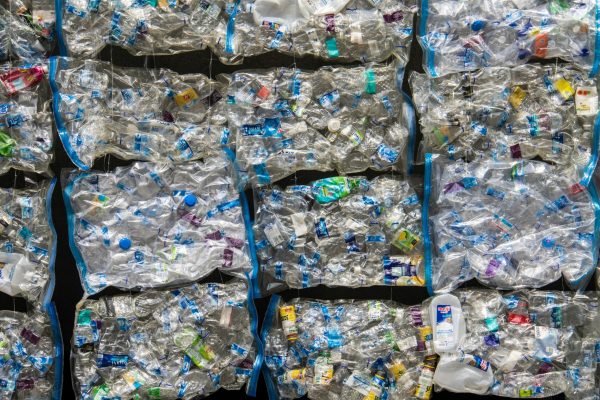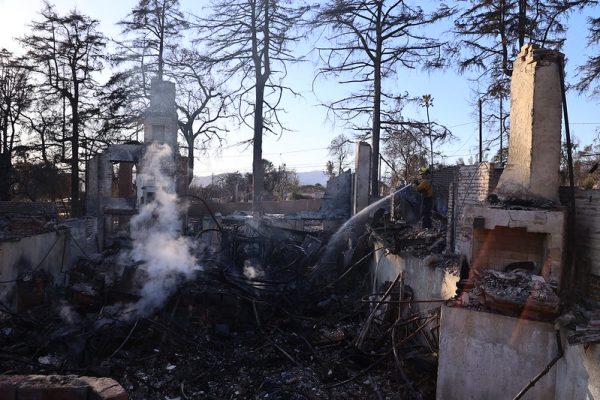Plastics are a problem that knows no boundaries. These intractable incarnations of fossil fuels have found their way into the atmosphere, our kitchen produce, and even the deepest part of the ocean. They choke wildlife to death and sully the world’s natural landscapes. In microscopic form, plastics are arguably even more pernicious — micro- and nanoplastics have infiltrated into reproductive organs, lodged themselves in the brain, wreaked havoc on cardiovascular health, and contaminated mammary glands.
In early December, representatives from around the world gathered to devise the first-ever global treaty to slow the tide of plastics pollution. But they blew it. After two years of recurring talks, an agreement failed to materialize between members of the United Nations. Many of the representatives wanted to phase out or curtail the production of plastic, but they were stymied by a small group of leaders from oil-producing countries. “The outcome of those treaty talks is disappointing,” Melissa Valliant, the communications director of the advocacy network Beyond Plastics told Sierra.
An ambitious antiplastic coalition, mainly small island nations and those from the Global South, said regulations on plastics after they become waste didn’t go far enough. Plastics had to be regulated before they hit the shelves.
Historically, recycling has never made a significant dent in waste. Only 9% of the world’s plastic is recycled to date. In the US, the Environmental Protection Agency estimated that the 2018 national recycling rate was a paltry 8.7% (most of it goes into landfills). But even this figure is a lowball, experts say. Recycling numbers only account for plastic collected for recycling, not the fraction that’s actually recycled. In some places, such as Boise, Idaho, and Salt Lake City, Utah, plastic waste that’s collected for recycling is burned. Now, recycling rates are set to decrease in the coming years as plastic production ratchets up and recycler countries like China, which once was the dumping ground of the United States’ plastic waste, close their ports to American trash exports.
The other trouble with recycling is that plastics simply aren’t cut out for it. Polymer products contain a variety of additives, up to 16,000 different chemicals, and they complicate the sorting process for each category to be recycled effectively. A content labeling mandate on plastic products or simplifying the formula would help, but the chemical makeup for plastics is often proprietary.
Processing waste is also riddled with social injustices. Landfills, recycling centers, and incineration facilities, not to mention petrochemical plants, are often located in minority or low-income neighborhoods. A 2016 report found that people of color are twice as likely as white residents to live within a mile of industrial facilities in the Houston area. Residents in these polluted areas face about a 25% higher respiratory hazard and cancer risk than the rest of Houston’s households. This pattern of fenceline communities disproportionately paying the price repeats across the US and the rest of the world.
While waste regulation is indispensable, it won’t address the other upstream environmental impacts of plastics incurred long before these products enter our bins. Production is an energy-intensive and leaky process, and it accounts for 5% of global greenhouse gas emissions, a footprint that’s three times as large as that of aviation‘s. That may sound puny, but the plastics industry is actually the fastest-growing source of emissions — it’s poised to reach 19% of the world’s entire carbon budget by 2040.
“We’re on course for an exponential increase of plastic production because the petrochemical sector is scaling up massively,” Sirine Rached, the global plastics policy coordinator at the advocacy group GAIA, said. As the world increasingly electrifies transportation and power generation, petrochemical companies are making up for lost sales by doubling down on plastics.
Environmentalists say that plastics regulation needs to kick in at the production level to nip the problem in the bud. This includes product bans, reducing plastics production, or setting caps. Without these measures, our plastic traffic is set to balloon by 70% in 2040 compared with 2020 levels.
“The only way to reduce waste disposal is to reduce material production because every single pound or ton of material that we bring into the world will become waste eventually,” Roland Geyer, an industrial ecologist at the University of California, Santa Barbara, said. “There’s no way around it.”
What cap level is appropriate? Anything helps, given the soaring trend of plastic production. A recent study in Science calculated that curbing annual virgin plastic synthesis at 2020 levels alone can reduce waste by 40% and emissions by 18%. Another report suggested that freezing at projected 2025 levels eliminates 5.1 billion tons of waste, shrinking the world’s trash heaps by a third. These are still generous allowances, and even these limits can wrench the plastic growth curve downward if not flatten it.
Even though the UN negotiations ended without a treaty, the fight for a global treaty isn’t over—further talks will be held sometime next year to continue working toward a global agreement. However, experts have expressed doubt about whether the outcome will be any different. Unfortunately, for-profit companies can’t be counted on either. Earlier this year, Coca-Cola, named the world’s top plastic producer for six years in a row, walked back on its commitment to make all of its packaging 50% recycled plastic by 2030, whittling that goal to at most 40% by 2035.
Instead of relying on companies and international treaties, local government policy is needed to make a substantial difference, Valliant said. For starters, bans or fees on single-use plastics can bring material change. After the District of Columbia mandated food businesses charge customers five cents per disposable bag in 2009, plastic bag use dropped 75% in six months, and the number of wayward bags contaminating local waterways fell by 72%. Another study found that banning single-use plastic bags eliminates nearly 300 bags per person from entering circulation per year. As of January 2024, 12 American states have instituted such a ban.
In the US, anti-plastics legislation takes effect in a patchwork across states and cities. Elsewhere, other countries have enacted tighter stances. The UK and the European Union have levied a plastic tax on non-recycled waste. Another shining beacon is Rwanda, which has prohibited all businesses from dealing with plastic bags and bottles since 2008. Since 2019, the African nation has imposed a complete ban on all single-use plastics.
The US has scant federal laws concerning plastics. Just last September, a bipartisan recycling bill came into fruition, and it aims to standardize the 9,000 or so recycling jurisdictions across the US. It also mandates a 30% minimum of recycled content in packaging. A few more proposed bills are also plodding through Congress. The Break Free From Plastic Pollution Act of 2021, perhaps the US’s most ambitious framework yet, proposes phasing out a variety of single-use products and making businesses responsible for managing the waste that arises from their products. Most of these bills, however, don’t address the plastics problem at the source, only at the post-consumer stage.
“This is not rocket science. We know the solutions,” Valiant said. “It’s all about the government putting in the necessary effort to prioritize people and the planet over industry profits so that society can move toward a world with less unnecessary plastic.”
Shi En Kim wrote this article for Sierra. Broadcast version by Suzanne Potter for California News Service reporting for the Solutions Journalism Network-Public News Service Collaboration.







